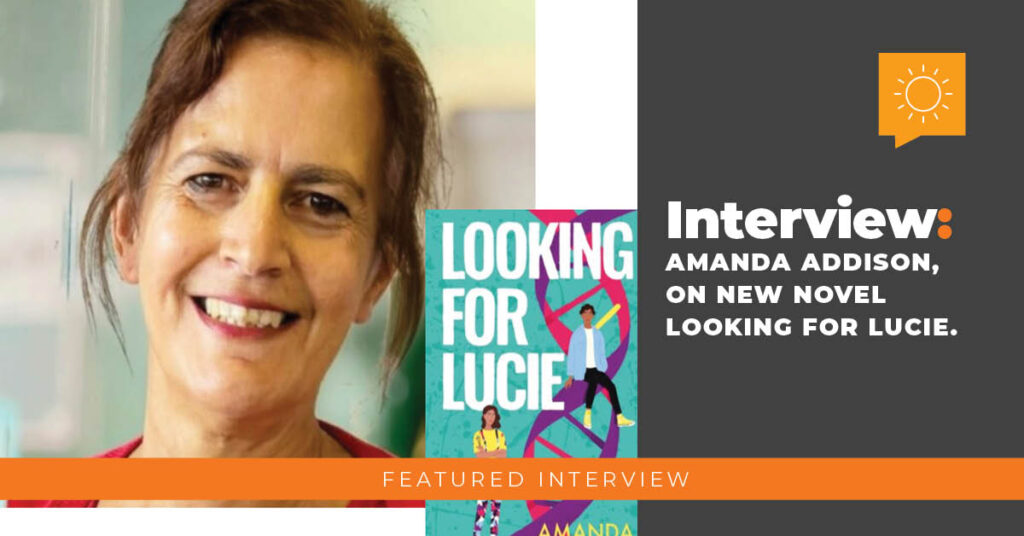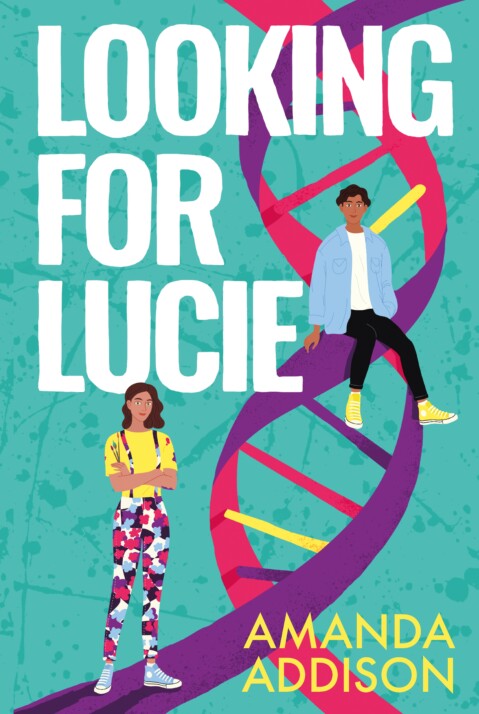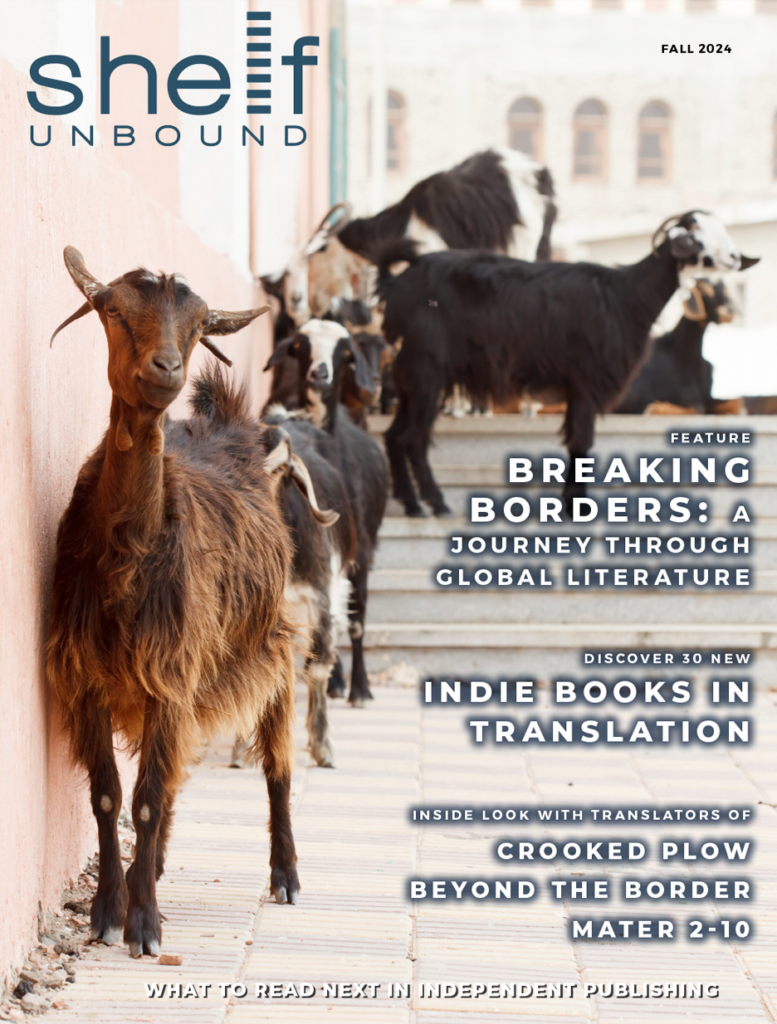By Michele Mathews

Releasing in October, Looking for Lucie is Amanda Addison’s newest novel. It’s a contemporary young adult novel about eighteen-year-old Lucie, who is an art student wanting to uncover her ethnic heritage and family history. This novel has been listed for a Searchlight Writing Novel Opening Award. Amanda has written short fiction to novels for children and adults, and her writing has been translated into several languages, including German and Ukrainian. She currently lives in Norfolk, UK.
What inspired you to write Looking for Lucie, and how did the idea of exploring identity and self-discovery come about for this particular story?
aa: I was inspired by both my own DNA test and the stories of others. Additionally, the question, Where are you really from? often followed by, Yes, but where are you really from? is so often asked to people with brown skin that it creates a sense of otherness. Many authors and/or their characters often have a feeling of being ‘outsiders’ or ‘other’ and this can give you a starting point when writing a story of self-discovery.
Lucie’s journey involves uncovering her ethnic heritage and family history. How did you research and incorporate these elements into the novel?
aa: Origin stories are complex and often focus on difference. The first part of Looking for Lucie does just that. She has been made to feel different and uncertain about her identity, which propels the storyline forward. However, as the novel progresses (without giving any spoilers!), other ideas of family history enter the storyline to give a more nuanced and multi-faceted view of what the term heritage might mean.
I know that some writers do most of their research before putting pen to paper. I like to write a first draft, which is research free, and then see what both I and my characters need to know. As I am an artist as well as an author, I am used to using artifacts, especially textiles, to tell stories. My favorite part of research is talking to people, from a retired science professor to check some of the scientific parts of the novel to family and friends. Although I have specific questions, I love to just let people talk as they often say interesting things, which I can interweave into the writing. There is also quite a lot of reference to photography in the book. This meant speaking with art and design colleagues where I teach.
The novel is described as exploring themes of identity, belonging, and self-discovery. How did you approach these themes to ensure they resonated deeply with your young adult audience?
aa: I chose to tell this story as a coming-of-age novel, as it is a time in our lives when we seek to establish an identity outside of our family—making Looking for Lucie especially suitable for a teen reader. However, the significance of uncovering one’s roots cuts across all ages. This also makes this novel suitable for book groups interested in discussing these themes, especially as some sections are told from the perspective of the adults in Lucie’s life.
I have worked for many years with young adults and was able to draw upon our conversations and their concerns. Ultimately, young adults are just people, as individual and mixed as any age group, and I wanted to show this through Lucie and Nav, the book’s two young adult narrators.
Can you share some insights into Lucie’s character development throughout the novel? What were some of the challenges and rewards in creating her journey?
aa: Lucie’s education as a textile student has not changed too much since I was a student, and as an art lecturer, I could very much imagine the sort of work she would make at college and later on at art school.
Having done my own DNA test, I was able to dig deep and allow some of my own changing feelings about taking the test, and often being asked the question, Where are you really from? to enter the novel and thus enrich Lucie’s character development.
How do you balance the exploration of complex themes like heritage and identity with crafting an engaging and relatable narrative for young adults?
aa: After writing my first draft, I felt it was important to bring ‘color’ and ‘texture’ into the text. This meant adding more descriptions and expanding dialogue, which I love writing. I was once told by a writing teacher that nobody ever skips pages of dialogue!
As the story progressed, I realized it had elements of a detective novel. I am an avid reader of crime fiction and enjoyed building up the tension to keep the story engaging and to give it more page turnability.
The book has been praised for its depiction of relationships. What role do Lucie’s relationships with other characters play in her journey, and how did you develop these interactions?
aa: I think we are very much shaped by people we meet on our life journey. If Lucie hadn’t had a chance meeting with Nav, the whole story could have gone in another direction. When I am writing, I often imagine these interactions as if they are happening in a film. I can see and hear them.
But all the characters have a little bit of me, bits of people I know, and a large dose of imagination.
In what ways did your personal experiences with travel, textiles, and the natural world influence the writing of Looking for Lucie?
aa: My real love, like Lucie in the novel, is textiles. I have always collected fabrics, loving their color, decoration, and functionality. I used saree ribbons to create an installation for a local sculpture trail and start a discussion about textile links between the UK and Indian subcontinent. Last year, I visited the Singh Twins ‘Slaves of Fashion’ exhibition at Norwich Castle Museum. I was lucky enough to attend a talk by them at Norwich University of the Arts, which brought up further questions of our entwined and entangled histories between the UK and Indian subcontinent. The Singh Twins and their work reflect Lucie’s own story as she studies art and textiles and goes on to tell her highly local and global history through her artwork.
My interest in travel is very broad, and I am infinitely curious. I am inspired by the natural world whilst travelling. But above all, travel is about meeting people, sharing our cultures, and building bridges. I have just returned from a Norfolk/Bavaria exchange visit staying with friends in a similar small village to where I live in the UK. We had such a wonderful time sharing and celebrating our similarities and differences and building bridges.
What was the most challenging aspect of writing Looking for Lucie, and how did you overcome these challenges?
aa: Although Lucy and Nav are the key narrators, I wanted to tell the story through the eyes of their parents. This was initially told in the third person. My editor suggested writing the adult chapters from the first-person point of view. Although I wasn’t sure at first whether I could do it, and if it would work. It really expands the story and allows the reader to see the complexity of the issues explored.
What advice would you give to aspiring writers who want to explore themes of identity and self-discovery in their own work?
aa: My advice would be to both read and write around these topics with an open and agile mind. You never know where it will lead.
I would also say to be brave and draw upon your own cultural experiences, even if they are not (and especially if they are not!) very well represented in fiction at the moment.
Are there any upcoming projects or new books you’re working on that you’re particularly excited about?
aa: I increasingly think that artists and scientists are very similar in their approach. They are both curious and forever asking questions about the world around us. I would like readers to consider how their approach is just two sides to the same coin. I am working on an early teens novel set in Norfolk, UK, and Indian Himalayas, where an artist and botanist come together to battle climate change.
Launching on World Habitats Day on October 7, 2024, my story Big Blue will be published as part of a Pop-Up Project called Children for Change, a digital book, funded by the Arts Council and sent to schools in the UK as a positive manifesto for the future of the planet.
Big Blue is the story of our wondrous oceans, and how two children make a difference keeping our seas clean and safe for everyone. I am looking forward to the story starting a conversation about keeping our oceans plastic free and how youngsters can be bold and take positive action around the coasts both locally and globally.

Looking for Lucie is a contemporary YA novel that explores identity, self-discovery, and newfound friendship as an 18-year-old girl sets out to uncover her ethnic heritage and family history.
“Where are you really from?”
It’s a question every brown girl in a white-washed town is familiar with, and one that Lucie has never been able to answer. All she knows is that her mother is white, she’s never met her father, and she looks nothing like the rest of her family. She can’t even talk about it because everyone says it shouldn’t matter!
Well, it matters to Lucie and—with her new friend Nav, who knows exactly who he is—she’s determined to find some answers.
What do you do when you question your entire existence?
You do a DNA test.

